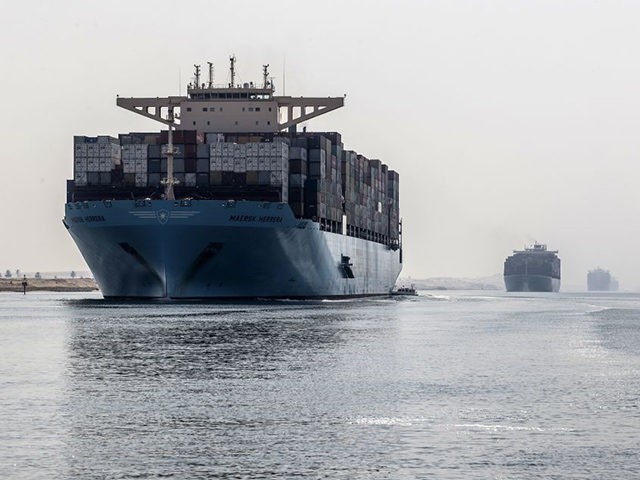Traffic through the vital Suez Canal was blocked Wednesday when the MV Ever Given, one of the largest container ships in operation, turned sideways and ran aground.
Hundreds of ships became stuck in the resulting nautical traffic jam, creating a significant threat of disruption to the world’s energy supply.
MV Ever Given is a Panama-flagged vessel owned by Shoei Kisan of Japan and operated by Taiwan-based Evergreen Marine Corp. The company stated Wednesday that the massive container-carrier, bound for Rotterdam with shipments from China, was “overcome by strong winds as it entered the Suez Canal from the Red Sea.”
Egyptian officials said the area was experiencing high winds and a sandstorm when the ship ran aground, although even the strongest winds would seem hard-pressed to alter the course of a ship that weighs about 220,000 tons.
The ship’s bow ended up touching the eastern wall of the canal, while its stern became planted against the western wall — a total blockage that has never before occurred in the 150 years of the Suez Canal’s operation, according to experts the Associated Press cited.
According to Evergreen Marine Corp., no containers were lost from the deck of the ship during the incident, and no injuries were reported. Management company BSM also stated all crewmembers were “safe and accounted for.”
A ship the size of the Empire State Building is not easy to dislodge, even with a swarm of tugboats devoted to the effort. The Suez Canal Authority estimated it could take up to two days to get the MV Ever Given completely clear of the vital passage between the Mediterranean and the Red Sea. Some officials clarified the ship might be refloated in a matter of hours, but it would take days for normal traffic through the canal to resume.
As of late Wednesday morning, the tugs were able to move the ship partially to one side of the canal, which should help traffic resume at reduced capacity.
Over ten percent of the world’s annual shipping passes through the Suez Canal, including a great deal of oil. Al-Arabiya reported the “world’s busiest maritime trade route has been thrown into turmoil.” At least fifty ships pass through the canal on a normal day of operation.
“European and US refiners that rely on the vital waterway for cargoes of Mideast oil may be forced to look for replacement supplies should the blockage persist, potentially boosting prices of alternative grades. At the same time, flows of crude from North Sea fields destined for Asia will be held up,” Al-Arabiya warned, suggesting the entire map of global demand for oil could be temporarily rearranged as European and American buyers seek alternatives for delayed Middle Eastern shipments.
“International crude prices were up more than 2% in early London trading, a move some analysts attributed to worry about oil shipments. Three tankers, including at least one chartered by Saudi Arabian Oil Co., carrying Saudi oil were waiting to move into the southern mouth of the canal early Wednesday. A total of 29 oil, products and liquefied natural gas tankers were waiting on the south side and 15 to the north, according to ship tracker FleetMon,” the Wall Street Journal reported.
The Associated Press noted another major concern about the Suez Canal blockage: at least a hundred ships are idle waiting for the canal to be cleared, many of them carrying huge quantities of crude oil. They make very inviting targets for terrorists, including the government of Iran, which has a penchant for attacking commercial shipping.
“All vessels should consider adopting a heightened posture of alertness if forced to remain static within the Red Sea or Gulf of Aden,” maritime security firm Dryad Global warned its clients on Wednesday.
The BBC reported the Egyptian government has opened an older section of the Suez Canal to route traffic around the stranded Ever Given. The canal is a major source of both national pride and revenue for Egypt, to the tune of almost $6 billion a year. A major expansion of the canal was opened in 2015 to accommodate larger vessels.
If the canal remains closed, the only alternative for many ships is to sail around the Cape of Good Hope, which consumes much more fuel and adds up to two weeks of transit time.

COMMENTS
Please let us know if you're having issues with commenting.